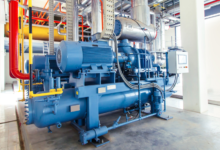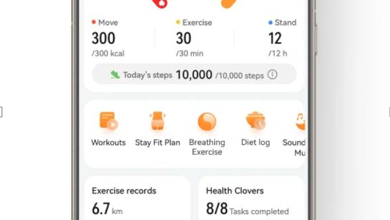SHA Decibel Limit for Employers: From Monitoring to Protection in Loud Environments

Understanding the osha decibel limit is essential for employers who manage workplaces with high noise levels. Excessive noise exposure can lead to permanent hearing damage, reduced productivity, and even legal penalties if proper standards are not followed. This article explores how employers can monitor sound levels, implement hearing protection programs, and maintain compliance with OSHA’s noise regulations to create a safer work environment.
OSHA Noise Standards
OSHA noise standards are rules designed to protect workers from hearing loss caused by workplace noise. Key points include:
- Permissible Exposure Limit (PEL): Noise should not exceed 90 dBA averaged over an 8-hour workday.
- Action Level: When noise reaches 85 dBA averaged over 8 hours, employers must start a hearing conservation program, including:
- Monitoring noise levels.
- Providing hearing protection.
- Conducting hearing tests.
- Training employees.
- Keeping records.
- Who Is Most Affected: Workers in construction, manufacturing, aviation, and transportation are at higher risk due to consistently high noise levels.
- Purpose: Protects hearing, prevents tinnitus, improves workplace safety, ensures compliance, and supports long-term productivity.
OSHA noise standards help monitor, control, and reduce workplace noise to keep employees safe and healthy.
What Are OSHA Decibel Limits
OSHA sets maximum noise levels to prevent workers from losing their hearing due to long-term exposure to loud sounds. These limits define the maximum amount of time a worker can safely be exposed to certain noise levels:
- 85 dBA (Action Level): Exposure at this level triggers a hearing conservation program. Example: Loud traffic inside a car.
- 90 dBA (Permissible Exposure Limit, PEL): Maximum safe exposure is 8 hours. Example: Shouted conversation.
- 95 dBA: Maximum 4 hours of exposure. Example: Electric drill or forklift area.
- 100 dBA: Maximum 2 hours of exposure. Example: Chainsaw or pneumatic drill.
- 140 dB (Peak Limit): Applies to impulse or impact noises like gunshots or explosions. Even a very short exposure can cause immediate hearing damage.
5-dB Exchange Rate
OSHA’s 5-dB exchange rate halves safe exposure time for every 5-decibel increase in noise. For example, if 90 dBA is safe for 8 hours, 95 dBA is safe for only 4 hours. These limits help employers plan noise control, hearing protection, and exposure monitoring to keep employees safe from hearing damage.
Monitoring Noise Levels
Monitoring noise levels is an important part of protecting workers’ hearing. Regular checks help identify which areas are loud and which employees may be at risk of hearing damage. Here’s how it works:
- Hand-held Sound Level Meters: Provide quick spot readings at specific locations to see how loud the noise is at that moment.
- Integrating Meters: Measure the average noise over time, capturing fluctuations that a single reading might miss.
- Dosimeters: Worn by employees to track noise exposure throughout an entire shift and calculate time-weighted averages (TWA) for a more complete assessment.
Purpose of These Measurements:
- Find parts of the workplace where the noise is too loud and could harm workers’ hearing.
- Verify that control measures like barriers, quieter machines, or PPE are working effectively.
- Ensure employees are not unknowingly overexposed to harmful noise levels.
Additional Tools:
- Mobile apps and frequency analyzers can help with initial checks, but for reliable, legally valid results, professional-grade, calibrated instruments are necessary.
Monitoring noise levels is about measuring, tracking, and controlling exposure to protect employees’ hearing and ensure regulatory compliance.
Hearing Conservation Program: When and What It Includes
When It Applies:
- Required when any employee’s noise exposure reaches 85 dBA over an 8-hour workday (the OSHA action level).
- Applies even if exposure at this level happens only occasionally.
What It Includes:
- Noise Monitoring: Identify at-risk employees and regularly check noise levels, especially after changes in equipment, processes, or staffing.
- Audiometric Testing: Provide a baseline hearing test within six months of exposure and annual tests to detect early hearing loss.
- Hearing Protection: Supply earplugs or earmuffs at no cost, ensure proper fit and use, and replace as needed. Use engineering or administrative controls whenever possible.
- Training: Educate employees yearly on noise hazards, proper hearing protection, and the importance of reporting hearing issues.
- Recordkeeping: Keep records of noise exposure for at least two years, and hold employees’ hearing test and training records for as long as they work at the company.
This program protects workers’ hearing, keeps track of noise risks, and ensures the company follows OSHA rules.
Engineering and Administrative Controls
- Engineering Controls:
Engineering controls are ways to make noise quieter at the source so workers don’t have to rely only on earplugs or earmuffs. They help make the workplace safer and more comfortable. Examples include:
- Quieter machines: Replacing old or loud equipment with newer, quieter models.
- Enclosing equipment: Using barriers or soundproof enclosures around noisy machinery to contain sound.
- Sound barriers or absorption materials: Installing walls, panels, or materials that absorb noise to reduce overall sound levels in the workplace.
Engineering controls are usually the best and most long-lasting way to protect hearing.
- Administrative Controls:
Administrative controls are ways to protect workers from loud noise by changing how or when they work, instead of changing the machines. These controls reduce the time people spend in noisy areas to keep their hearing safe. Examples include:
- Adjusting work schedules: Limiting the amount of time any employee spends in noisy areas.
- Rotating tasks or crews: Sharing noisy duties among multiple workers so no one person is overexposed.
- Reassigning employees: Moving workers to quieter areas whenever possible.
These controls help protect hearing by managing how long and when workers are exposed to loud sounds.
These strategies help stop hearing loss before it occurs, rather than just protecting workers after they’ve already been exposed to loud noise.
Recordkeeping and Compliance
Recordkeeping and compliance ensure that workplaces meet OSHA’s noise standards, protect employees from hearing loss, and provide documentation in case of inspections or audits. Accurate records help employers track noise exposure trends and evaluate the effectiveness of hearing conservation programs.
Key points include:
- Noise Exposure Records: Keep measurements of workplace noise for at least 2 years.
- Audiometric Records: Retain employees’ hearing test results for the duration of their employment.
- Training Records: Document annual hearing conservation training sessions.
- Hearing Protection Documentation: Track the types, ratings, and calibration of hearing protection equipment.
Benefits of Proper Recordkeeping
- Reduces risk of regulatory fines and penalties.
- Protects employees from long-term hearing loss.
- Helps identify trends in noise exposure for preventive measures.
- Supports legal and insurance documentation in case of claims.
Proper recordkeeping helps verify compliance, monitor risks, and demonstrate that safety measures are in place to prevent hearing loss.
Benefits of Compliance
Following OSHA noise standards and hearing conservation programs provides important advantages for both workers and employers:
- Protects Hearing Health: Helps prevent permanent hearing loss and tinnitus by reducing workers’ exposure to loud noise.
- Enhances Workplace Safety: Reducing noise and protecting hearing helps prevent accidents by making it easier for workers to hear alarms, instructions, and warnings, creating a safer and more efficient work environment.
- Reduces Costs: Helps employers save money by preventing medical expenses, compensation claims, and lost workdays caused by hearing-related problems.
- Ensures Legal Compliance: Following OSHA noise regulations keeps the company within the law and helps avoid fines, penalties, and legal issues related to excessive noise exposure.
- Improves Employee Morale: Showing commitment to protecting workers’ health and safety increases trust, loyalty, and overall job satisfaction.
- Supports Long-Term Productivity: Healthy hearing allows employees to communicate clearly, work efficiently, and maintain strong performance over time.
Following OSHA noise rules protects hearing, ensures safety, saves costs, avoids legal problems, and supports productivity.






